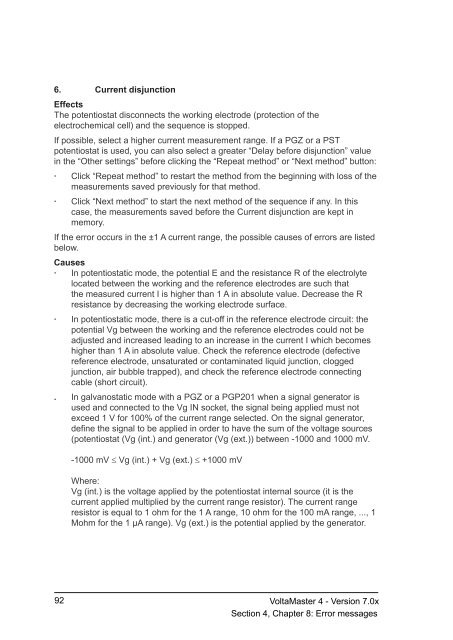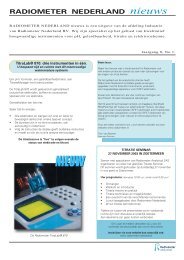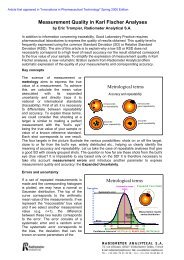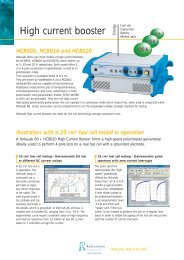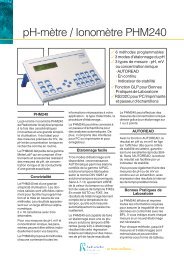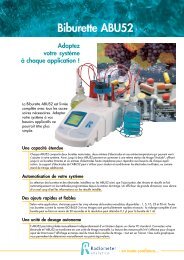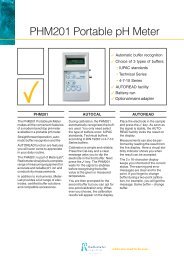Register your product now - Radiometer Analytical
Register your product now - Radiometer Analytical
Register your product now - Radiometer Analytical
Create successful ePaper yourself
Turn your PDF publications into a flip-book with our unique Google optimized e-Paper software.
6. Current disjunctionEffectsThe potentiostat disconnects the working electrode (protection of theelectrochemical cell) and the sequence is stopped.If possible, select a higher current measurement range. If a PGZ or a PSTpotentiostat is used, you can also select a greater “Delay before disjunction” valuein the “Other settings” before clicking the “Repeat method” or “Next method” button:· Click “Repeat method” to restart the method from the beginning with loss of themeasurements saved previously for that method.· Click “Next method” to start the next method of the sequence if any. In thiscase, the measurements saved before the Current disjunction are kept inmemory.If the error occurs in the ±1 A current range, the possible causes of errors are listedbelow.Causes· In potentiostatic mode, the potential E and the resistance R of the electrolytelocated between the working and the reference electrodes are such thatthe measured current I is higher than 1 A in absolute value. Decrease the Rresistance by decreasing the working electrode surface.· In potentiostatic mode, there is a cut-off in the reference electrode circuit: thepotential Vg between the working and the reference electrodes could not beadjusted and increased leading to an increase in the current I which becomeshigher than 1 A in absolute value. Check the reference electrode (defectivereference electrode, unsaturated or contaminated liquid junction, cloggedjunction, air bubble trapped), and check the reference electrode connectingcable (short circuit).. In galvanostatic mode with a PGZ or a PGP201 when a signal generator isused and connected to the Vg IN socket, the signal being applied must notexceed 1 V for 100% of the current range selected. On the signal generator,define the signal to be applied in order to have the sum of the voltage sources(potentiostat (Vg (int.) and generator (Vg (ext.)) between -1000 and 1000 mV.-1000 mV ≤ Vg (int.) + Vg (ext.) ≤ +1000 mVWhere:Vg (int.) is the voltage applied by the potentiostat internal source (it is thecurrent applied multiplied by the current range resistor). The current rangeresistor is equal to 1 ohm for the 1 A range, 10 ohm for the 100 mA range, ..., 1Mohm for the 1 µA range). Vg (ext.) is the potential applied by the generator.92VoltaMaster 4 - Version 7.0xSection 4, Chapter 8: Error messages


